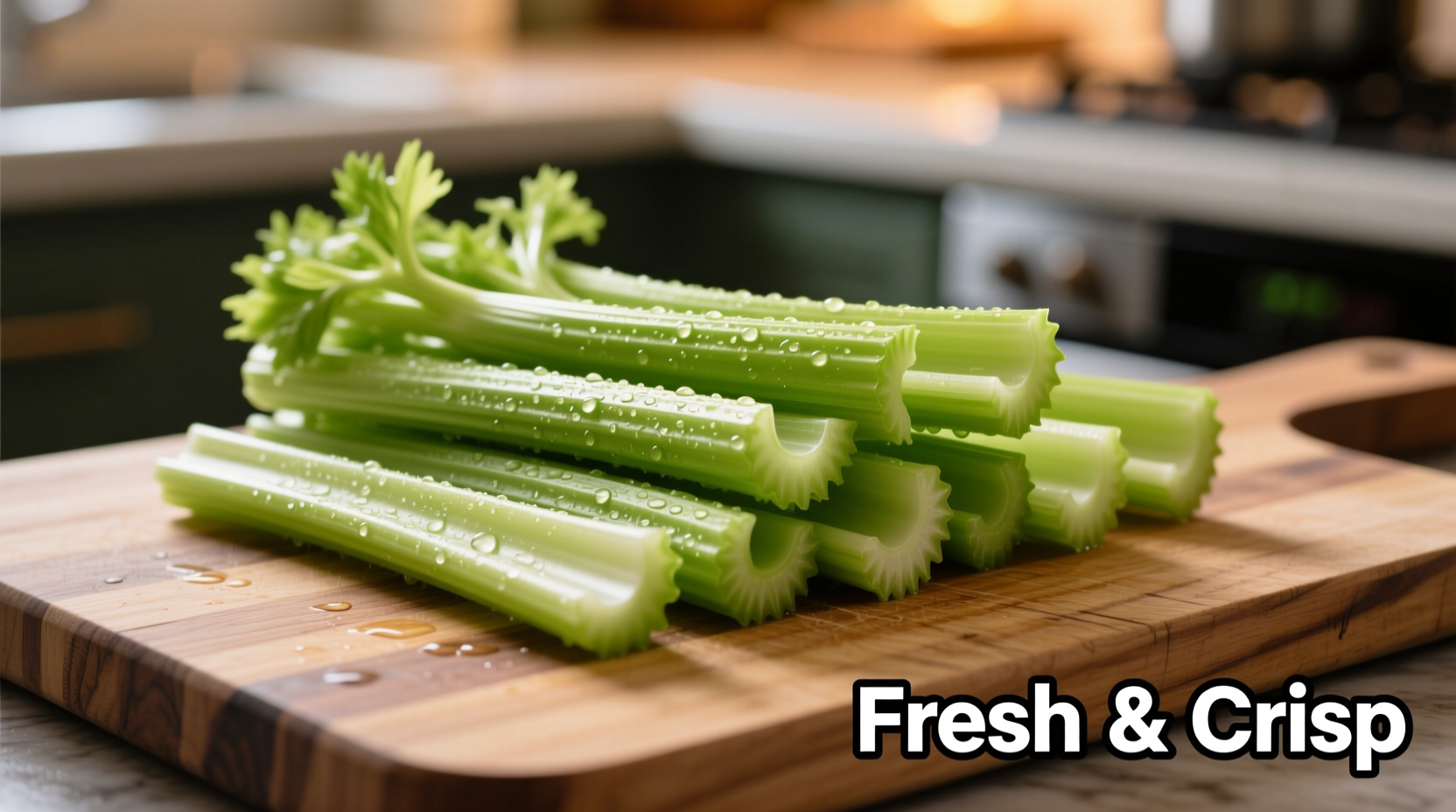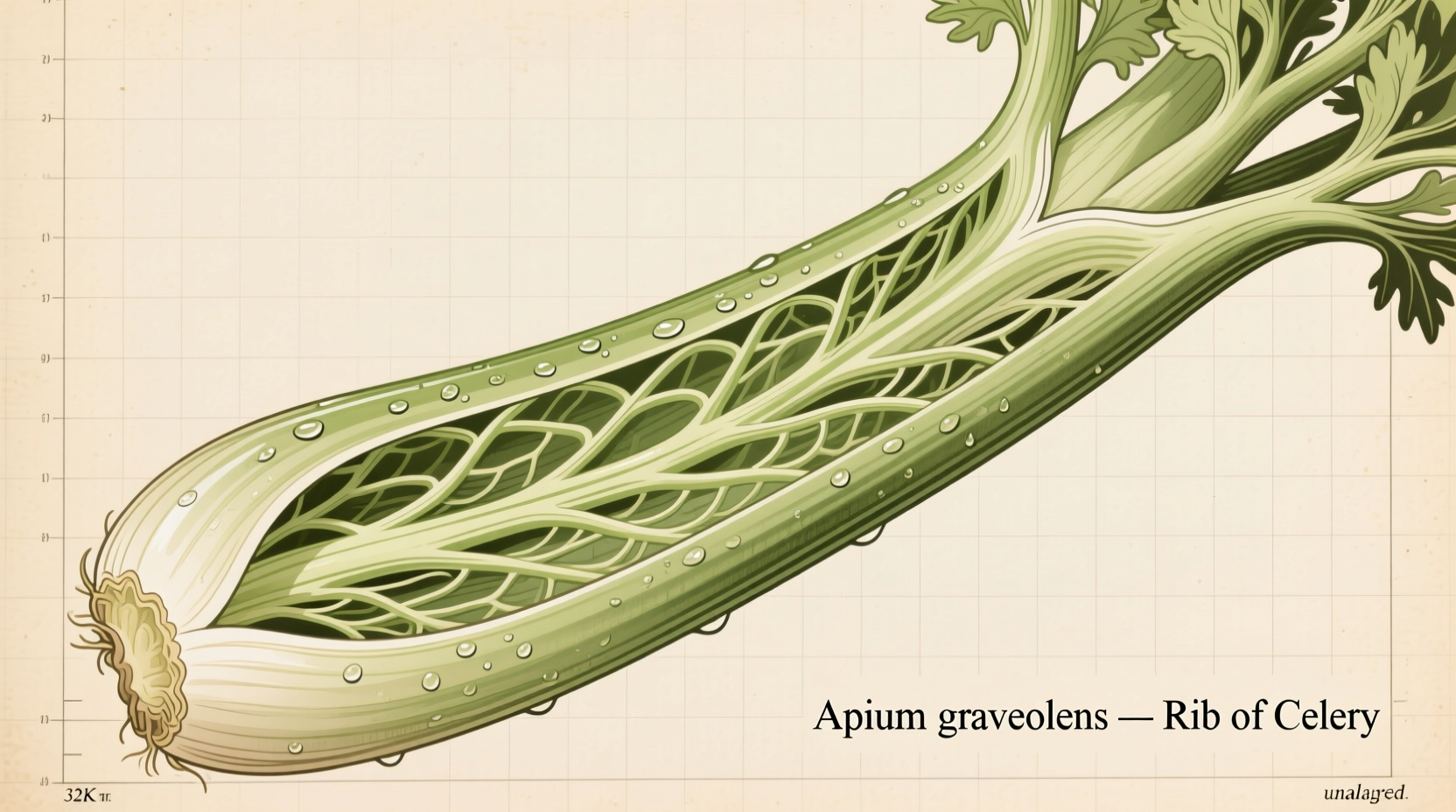Ever stared at a celery bunch wondering which part qualifies as ‘one rib’? You’re not alone. This common culinary confusion leads to recipe disasters—from bland soups to overpowering salads. Let’s clarify exactly what a celery rib is and why it matters in your kitchen.
Defining the Celery Rib: Beyond Botanical Confusion
Despite the term ‘rib,’ celery doesn’t have true ribs like meat. The culinary world adopted ‘rib’ to describe each individual curved segment within a celery bunch. What many call a ‘stalk’ is actually a collection of these ribs bundled together.
Botanically, celery (Apium graveolens) consists of leafy tops and a cluster of leaf petioles—the technical term for those crisp, curved sections. When grocery stores label a package as ‘one stalk,’ they’re selling what chefs consider multiple ribs. This terminology mismatch causes endless recipe confusion.

Why Recipe Measurements Specify ‘Ribs’ Instead of Stalks
Professional recipes use ‘ribs’ because size varies dramatically between celery bunches. A supermarket ‘stalk’ might contain 6-10 ribs, making ‘one stalk’ an unreliable measurement. Specifying ribs creates consistency:
| Celery Measurement | Actual Quantity | Chopped Volume |
|---|---|---|
| 1 medium rib | Single curved segment | ⅛ cup (30g) |
| 1 supermarket ‘stalk’ | 6-10 ribs | ¾-1¼ cups |
| 1 standard bunch | 8-12 ribs | 1½-2 cups |
This USDA FoodData Central verified measurement system explains why professional chefs specify ribs. Using the wrong quantity alters flavor balance—celery’s subtle bitterness can dominate dishes when overused.
Practical Cooking Applications: When Precision Matters
Understanding celery ribs becomes critical in these scenarios:
- Soup bases: Mirepoix requires equal parts celery, carrot, and onion. Using one entire ‘stalk’ instead of 2 ribs creates overpowering celery flavor
- Salad composition: Waldorf salad needs precisely 2 ribs for proper apple-to-celery ratio
- Stock preparation: Too many ribs impart medicinal notes; 3-4 ribs per quart maintains balance
Cornell University’s Food Science Department confirms that celery’s volatile compounds concentrate in the outer ribs. This explains why recipes often specify ‘inner ribs’ for delicate dishes—they contain 30% less psoralen, celery’s natural bittering agent (cals.cornell.edu).
Avoiding Common Celery Measurement Mistakes
Home cooks frequently make these errors:
- Mistaking the entire bunch for one rib
- Using outer ribs for raw applications (they’re tougher)
- Not accounting for size variation between seasons (winter celery has thicker ribs)
For consistent results, always:
- Count individual curved segments, not the bundled package
- Use inner ribs for salads and garnishes
- Chop and measure when recipes specify ‘¼ cup chopped’
Pro Tips for Working with Celery Ribs
Professional chefs maximize celery’s potential by:
- Peeling outer strings from larger ribs using a vegetable peeler
- Reserving leafy tops for stocks (they contain concentrated flavor)
- Storing cut ribs in water to maintain crispness for 2 weeks
Remember that celery’s flavor intensifies when cooked. One rib raw equals approximately two ribs cooked in flavor impact—a crucial consideration for recipe adaptation.
Frequently Asked Questions
Is a celery rib the same as a stalk?
No. A celery rib is one individual curved segment. What supermarkets call a ‘stalk’ contains multiple ribs (typically 6-10). Recipes specifying ‘ribs’ refer to single segments.
How many cups does one celery rib yield chopped?
One medium celery rib yields approximately ⅛ cup (30g) of chopped celery. Larger ribs may produce up to ¼ cup. Always chop and measure when recipes specify volume.
Why do recipes specify ‘ribs’ instead of stalks?
Because supermarket ‘stalks’ vary dramatically in size (6-10 ribs per bundle). Specifying ribs creates consistency in flavor balance, especially important for mirepoix and stocks where precise vegetable ratios matter.
Which celery ribs are best for raw applications?
Inner ribs are preferable for raw applications like salads. They’re more tender and contain 30% less psoralen (the compound responsible for celery’s slight bitterness) than outer ribs, according to Cornell University food science research.











 浙公网安备
33010002000092号
浙公网安备
33010002000092号 浙B2-20120091-4
浙B2-20120091-4